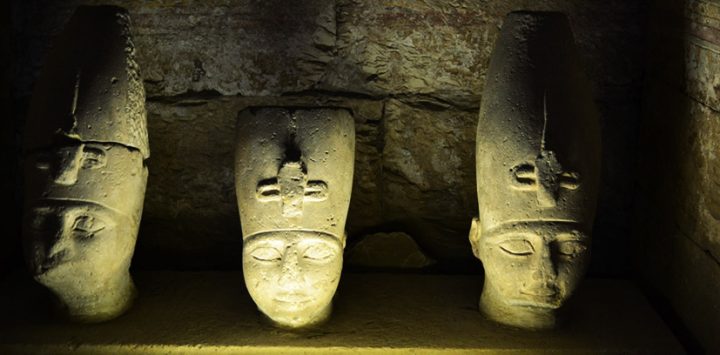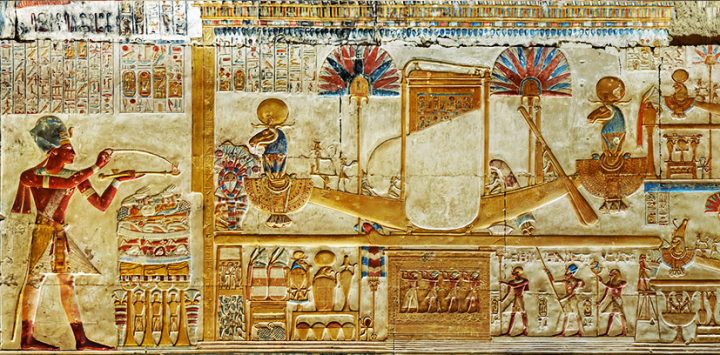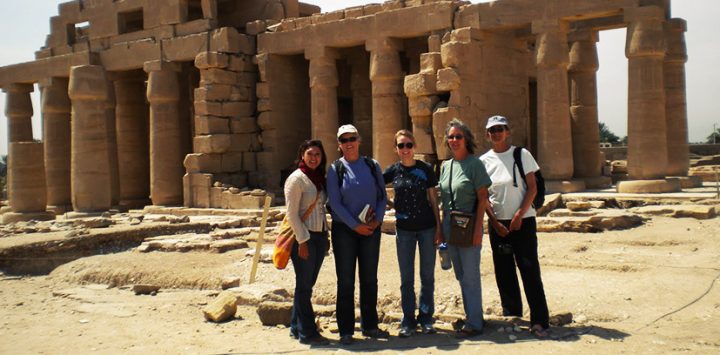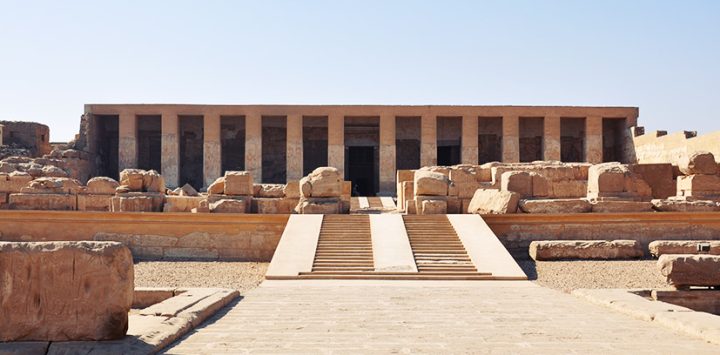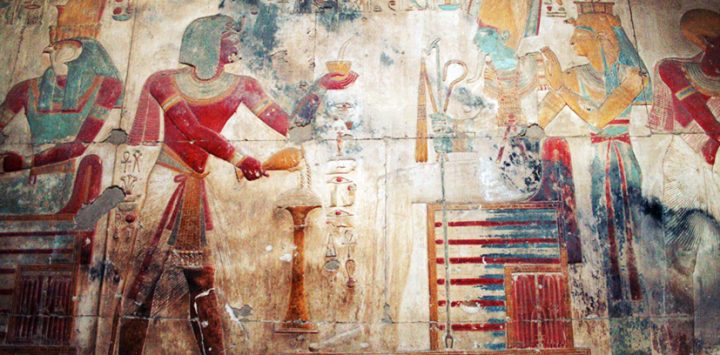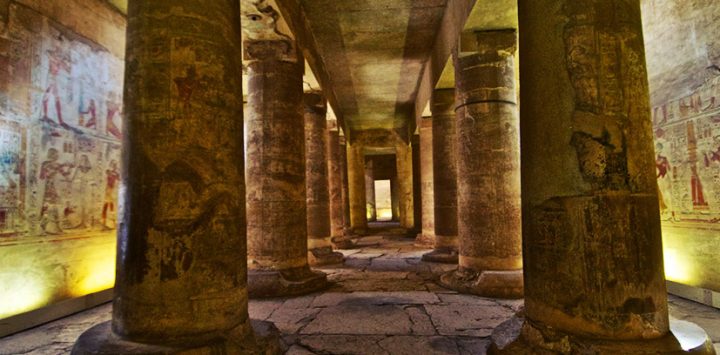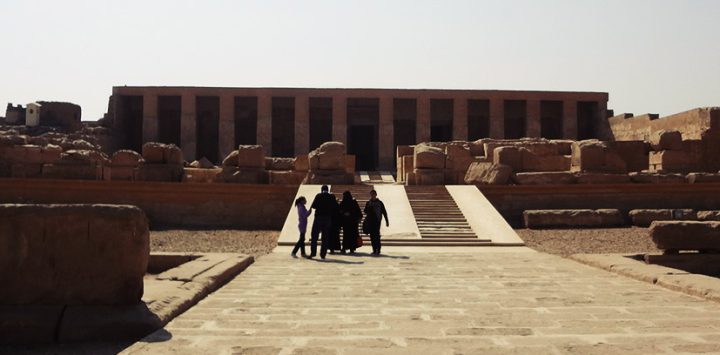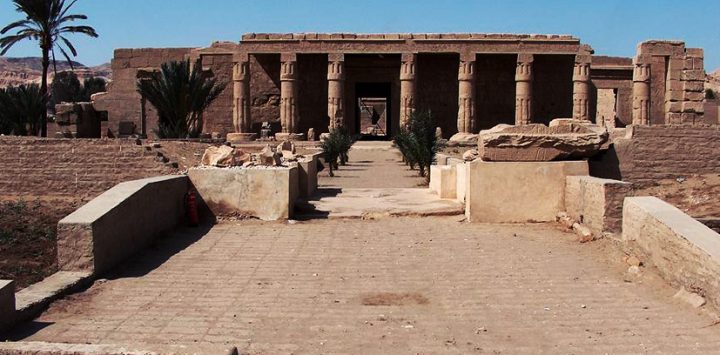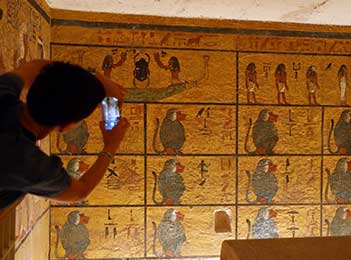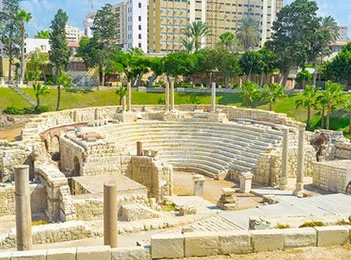Geographical Location of the City of Abydos
The historical site of Abydos is actually located inside the governorate of Sohag, 11 kilometers to the West of the River Nile and 46 kilometers to the South West of the city of Sohag.
The city of Sohag is located approximately 467 kilometers to the South of Cairo, 412 Kilometers to North of Aswan, around 200 kilometers to the North of Luxor, and about 700 kilometers to the South East of the city of Alexandria.
Abydos can be reached using a private or hired car from the city of Sohag, or anywhere else around Egypt. However, it is always recommended for tourists spending their vacation in Egypt to organize such a trip with one of the reputable and trusted travel companies in Egypt.
The History and the construction of the City of Abydos
Historians assert that the ancient city of Abydos dates back to more than five thousand years. However, the antiquities that were found in Abydos until today date as far as the third civilization of Naqada and the first fourth dynasties of the Old Kingdom of ancient Egypt.
These antiquities dating back to the 30th century BC were in fact found in the Temple of Seti I, one of the sections of the city that was found and which was constructed later on during the ruling period of the New Kingdom.
Abydos remained as an important burial site for the kings and Pharaohs of ancient Egypt until king Djoser, the builder of the step pyramid, relocated the ancient royal necropolis to saqqara.
Afterwards, other kings preferred to be buried in Giza, Abu Sir, Dahshur, and Saqqara. However, Abydos remained as an important burial site as late as the ruling period of the 6th dynasty.
When the king Pepi I, who belonged to the 6th dynasty, became the king of Egypt at the end of the 23rd century BC, he chose to be buried in Abydos. Later on in history, his tomb was transformed into a large temple dedicated to the worship of the god Osiris.
During the first intermediate period of ancient Egypt, that remained from 2181-2055 BC, Abydos used to follow the rule of Thebes, the capital of Egypt at the time.
During the reign of the intermediate period, Abydos retained its position as a royal necropolis of ancient Egypt. It was still an important burial site where all the mortuary rituals were carried out even though the king was buried to the North in one of the necropolises situated there.
These rituals were associated with the god Osiris, whom the ancient Egyptian believed has been buried in Abydos till the end of time.
Since the ruling period of the 11th dynasty that remained from 2134 till 1991 BC, the main old temple of Abydos was rebuilt. Moreover, the king Senusert III constructed another temple for the worship of the god Osiris. Both constructions were made out of mud bricks and Abydos remained as an important city during the reign of the New Kingdom.
When the famous ancient Egyptian king; Ahmos, was able to defeat the Hyksos and took control of Egypt in the 16th century BC, he built two pyramids for himself and his grandmother near the city of Abydos.
The most important constructions of Abydos go back to the reign of the New Kingdom. Two major temples were constructed in the city; the Temple of Seti I and the Temple of Ramses II.
The Description of the City of Abydos Today
Abydos was one of the most sacred cities of ancient Egypt. Maybe this is why tourists who visit Egypt until today are keen to explore the wonders of this Pharaonic religious hub.
Although Abydos was a huge vast city with many tombs, temples, and lakes, all what we can view today include the Temple of Seti I that is truly remarkable. The temple was built in the period between 1294 and 1279 BC and it was one of the most intact ancient historical sites in Egypt.
The Temple of Seti I in Abydos, constructed out of white limestone, has some of the most notable bas relief that date back to the ruling period of the New Kingdom with some of them having their original colors preserved.
The king Seti I was the father of Ramses II and when Seti I passed away in 1279 BC, Ramses constructed another temple near that of his father.
The Temple of Ramses II in Abydos is remarkable for its hieroglyphic inscriptions. It starts with a hypostyle hall from which the guests who visit the temple enter inside the temple.
The most important sections of the Temple of Ramses II in Abydos include the scenes located in the second hypostyle hall of the temple that show the king Seti I with the gods Osiris and Horus.
Beyond the second hypostyle hall, there are the seven chapels dedicated to the gods Ptah, Ra Horakhaty, Amun, Isis, Osiris, and Horus that are featured with the colorful scenes. These chapels used to host the statues and the baroque of each god for worship measures.

